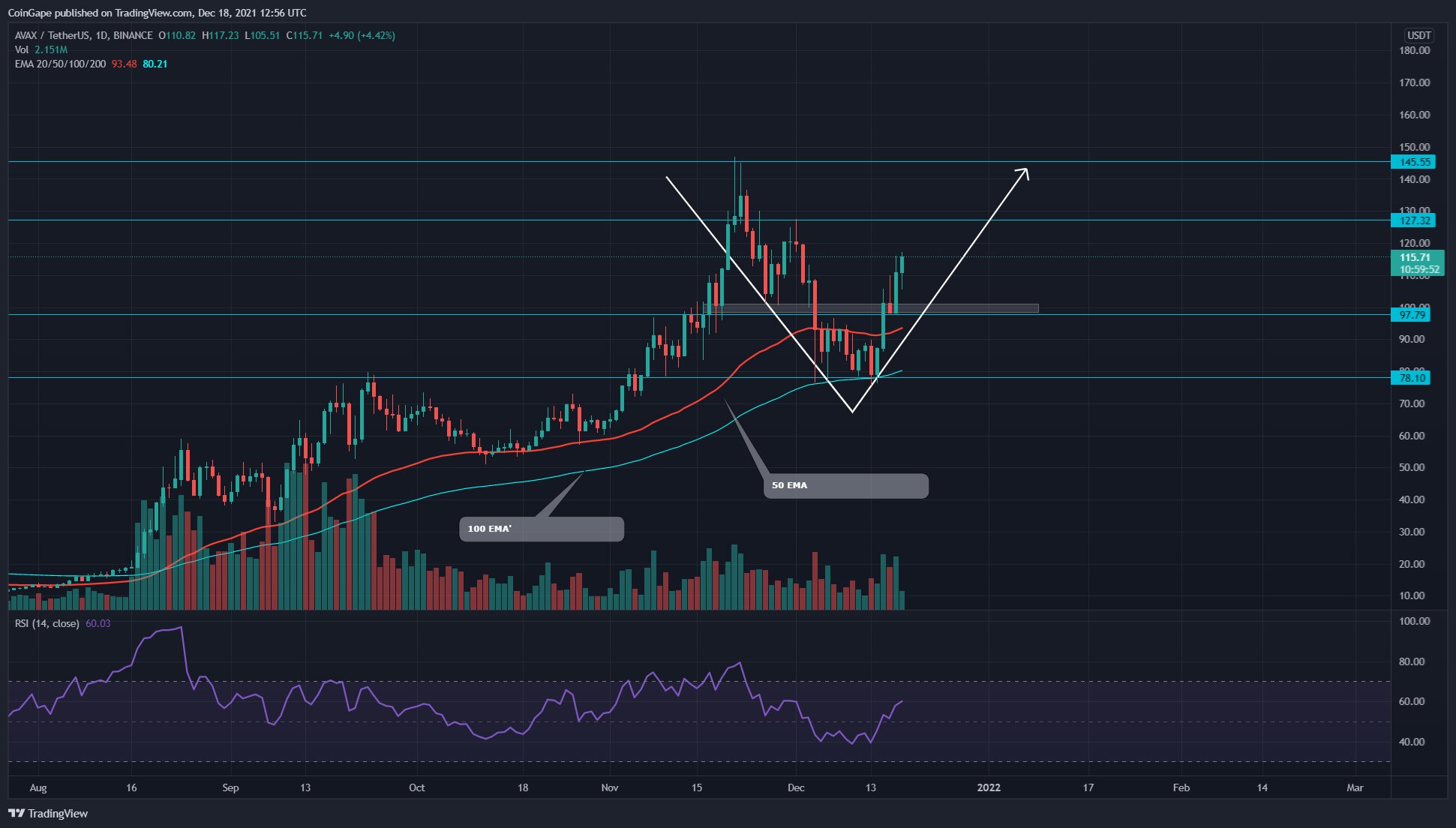Introduction
Welcome to the exciting world of crypto blockchains! In this ever-evolving digital landscape, cryptocurrencies have taken the spotlight, and blockchains are the revolutionary technology behind their success. Whether you are an avid crypto investor or new to the concept, understanding the fundamentals of a crypto blockchain is crucial to navigate this dynamic industry.
So, what exactly is a crypto blockchain? In simple terms, it is a decentralized digital ledger that securely records transactions across multiple computers or nodes. Unlike traditional centralized databases, where a single authority controls and verifies transactions, a crypto blockchain relies on a distributed network of participants, ensuring transparency, security, and immutability.
A crypto blockchain operates on a peer-to-peer network, where participants, known as nodes, maintain the integrity of the ledger through consensus algorithms. Each transaction is bundled into a block, which is then added to the chain in a chronological order. The beauty of this technology lies in its ability to eliminate the need for intermediaries, reduce transaction costs, and provide a tamper-proof record of all activities.
As cryptocurrencies gained popularity, Bitcoin became the first and most prominent application of blockchain technology. However, the scope of crypto blockchains extends far beyond digital currencies. They have paved the way for a wide range of use cases, including smart contracts, decentralized applications (DApps), supply chain management, tokenization of assets, and much more.
It’s important to note that crypto blockchains are not just limited to financial applications. Their decentralized nature and secure framework make them suitable for various industries, including healthcare, logistics, real estate, and even voting systems. The potential for innovation and disruption is virtually limitless.
In this article, we will delve deeper into the workings of a crypto blockchain, exploring its key features, benefits, and common use cases. We will also touch upon the potential challenges and limitations that come with this technology. By the end, you will have a comprehensive understanding of crypto blockchains and the impact they have on the digital landscape.
Definition of Crypto Blockchain
A crypto blockchain, also known as a cryptocurrency blockchain, is a digital ledger that records and verifies transactions in a decentralized and secure manner. It is the underlying technology behind cryptocurrencies like Bitcoin, Ethereum, and many others. The term “blockchain” refers to a chain of blocks, where each block contains a list of transactions.
At its core, a crypto blockchain is a distributed database that operates on a network of computers or nodes. These nodes work together to validate and confirm the authenticity of transactions, creating a consensus mechanism that ensures the integrity of the ledger.
The fundamental principle of a crypto blockchain is transparency. Every transaction recorded on the blockchain is visible to all participants, ensuring a high level of accountability. However, while the transactions are transparent, the identities of the individuals involved may remain pseudonymous or anonymous, depending on the specific blockchain protocol.
Immutability is another key characteristic of a crypto blockchain. Once a transaction is added to a block and added to the chain, altering or tampering with it becomes extremely difficult. The blocks are linked using cryptographic hashes, creating a digital fingerprint that connects each subsequent block to the previous one. This ensures that any change made to a block will be immediately detectable, alerting the network to potential fraud or manipulation.
One of the main advantages of a crypto blockchain is its decentralized nature. Unlike traditional centralized systems where a single authority controls the data, a crypto blockchain is maintained by a network of participants, preventing any single entity from having complete control over the ledger. This decentralization not only increases the security and reliability of the system but also reduces the risk of censorship or manipulation.
It’s worth noting that while blockchain technology is most commonly associated with cryptocurrencies, the concept can extend beyond financial applications. Blockchain has the potential to revolutionize various industries by enabling secure and transparent record-keeping, facilitating peer-to-peer interactions, and eliminating the need for intermediaries.
In the next section, we will explore how a crypto blockchain functions and the key components that make it work. So let’s dive in and unravel the inner workings of this transformative technology.
How Does a Crypto Blockchain Work?
Understanding the inner workings of a crypto blockchain is essential to grasp its transformative capabilities. Let’s explore the key components and processes that make a crypto blockchain function.
1. Distributed Network: A crypto blockchain operates on a decentralized network of computers or nodes. Each node stores a copy of the entire blockchain ledger, ensuring redundancy and resilience. This distributed network eliminates the reliance on a central authority and enhances the security and integrity of the system.
2. Transaction Validation: When a user initiates a transaction, it is broadcasted to the network. The nodes collectively validate the transaction by ensuring that the sender has sufficient funds and that the transaction adheres to the predefined rules of the blockchain protocol. This process is typically carried out through consensus algorithms, with popular methods including Proof of Work (PoW) and Proof of Stake (PoS).
3. Block Creation: Validated transactions are grouped into blocks, each containing a unique identifier called a cryptographic hash, which links it to the previous block. This chaining of blocks ensures the immutability and integrity of the entire blockchain. Miners, who are participants in the network, compete to solve complex computational puzzles, with the winner being rewarded with cryptocurrency tokens. This process, known as mining, adds the validated block to the blockchain.
4. Consensus Mechanism: Consensus algorithms are used to ensure that the network agrees on the state of the blockchain. These algorithms, such as PoW or PoS mentioned earlier, require participants to reach a consensus on which block to add next or which version of the blockchain is the valid one. Through consensus, the distributed network ensures that multiple copies of the ledger are synchronized and agree on the same set of transactions.
5. Security and Tamper Resistance: The distributed nature of a crypto blockchain, along with cryptographic techniques, provides a high level of security and tamper resistance. Once a block is added to the blockchain, altering or tampering with it becomes extremely difficult due to the linked structure and the computational power required to make changes. This ensures the integrity and immutability of the recorded transactions.
6. Transparency and Privacy: A crypto blockchain offers transparency by making all transactions visible to participants. However, the actual identities of the individuals involved may remain pseudonymous or anonymous, depending on the blockchain protocol. This balance of transparency and privacy allows for traceability and accountability without compromising user confidentiality.
Through these processes and components, a crypto blockchain ensures the secure and efficient recording, validation, and storage of transactions. It provides a trustless environment where participants can interact and transact directly without the need for intermediaries.
In the next section, we will explore some key features of a crypto blockchain, highlighting what sets it apart from traditional centralized systems. So let’s continue our journey into the world of crypto blockchains.
Key Features of a Crypto Blockchain
A crypto blockchain possesses several distinctive features that set it apart from traditional centralized systems. These key features contribute to the technology’s widespread adoption and its potential to transform various industries. Let’s delve into the core characteristics of a crypto blockchain.
1. Decentralization: One of the primary features of a crypto blockchain is its decentralized nature. Unlike centralized systems where a single authority controls the data and transactions, a crypto blockchain operates on a network of distributed nodes. This decentralization removes the need for intermediaries, reduces the risk of censorship or manipulation, and promotes transparency and security.
2. Transparency: A crypto blockchain offers transparent and verifiable transactions. Every transaction recorded on the blockchain is visible to all network participants. This transparency ensures accountability and prevents fraudulent activities. However, while the transactions are transparent, the identities of the individuals involved may remain pseudonymous or anonymous, depending on the level of privacy provided by the blockchain protocol.
3. Security: Blockchain technology provides robust security mechanisms. The cryptographic algorithms used to secure the transactions and the distributed nature of the blockchain make it highly resistant to hacking, tampering, and fraud. Once a transaction is recorded on the blockchain, it becomes extremely difficult to alter or remove it, ensuring the integrity and immutability of the data.
4. Immutability: Immutability is a key feature of a crypto blockchain. Once a block is added to the chain, it cannot be modified or deleted without consensus from the network participants. Each block is connected to the previous one through cryptographic hashes, creating a digital fingerprint that detects any attempted changes. This immutability creates a tamper-proof record of all transactions, enhancing trust and reliability.
5. Distributed Consensus: Consensus mechanisms play a crucial role in a crypto blockchain. These algorithms ensure that all network participants agree on the state of the blockchain and the validity of transactions. Popular consensus mechanisms include Proof of Work (PoW) and Proof of Stake (PoS), which aim to achieve agreement and prevent malicious activities by requiring participants to solve computational puzzles or stake cryptocurrency tokens.
6. Efficiency and Cost-effectiveness: Crypto blockchains can streamline processes and reduce costs in various industries. By eliminating the need for intermediaries, blockchain technology enables direct peer-to-peer transactions, reducing the associated fees and time delays. Additionally, smart contract functionality automates the execution of contractual agreements, improving efficiency and accuracy.
These key features make a crypto blockchain a powerful and disruptive technology. The combination of decentralization, transparency, security, immutability, distributed consensus, and cost-effectiveness provides numerous benefits and opens up a wide range of applications.
In the next section, we will explore the benefits and advantages of using a crypto blockchain, shedding light on why organizations and individuals are increasingly embracing this transformative technology.
Benefits and Advantages of Using a Crypto Blockchain
The adoption of crypto blockchains comes with a multitude of benefits and advantages that have made it a popular choice for individuals and organizations across various sectors. Let’s explore the key advantages of using a crypto blockchain.
1. Enhanced Security: Crypto blockchains provide a high level of security through cryptography and distributed consensus mechanisms. The decentralized nature of the blockchain reduces the risk of single points of failure or hacking attacks. Additionally, the immutability of recorded transactions ensures that once a transaction is added to the blockchain, it cannot be altered or tampered with, providing a tamper-proof and transparent record.
2. Greater Transparency: Transparency is a core feature of crypto blockchains. All transactions recorded on the blockchain are visible to all participants, promoting trust and accountability. This transparency can be particularly beneficial in sectors such as supply chain management, where stakeholders can track and verify the origin and movement of goods, ensuring authenticity and reducing fraud.
3. Improved Efficiency: The use of crypto blockchains can significantly enhance efficiency by eliminating intermediaries and automating processes. With smart contracts, self-executing agreements coded directly into the blockchain, manual intervention and paperwork can be minimized, reducing errors and delays. This streamlined approach improves efficiency and saves time and resources.
4. Cost Reduction: The elimination of intermediaries and the increased efficiency offered by crypto blockchains result in cost savings. By removing the need for intermediaries, transaction fees can be significantly reduced. Additionally, the automation of processes through smart contracts reduces the need for manual labor and paperwork, further reducing costs for businesses.
5. Increased Trust and Reliability: Crypto blockchains foster trust between entities by providing a transparent and auditable record of transactions. Participants can have confidence that the information recorded on the blockchain is accurate and trustworthy, reducing the need for third-party verification or reliance on intermediaries. This trust and reliability are particularly valuable in sectors where trust is essential, such as finance, healthcare, and legal industries.
6. Global Accessibility: Crypto blockchains enable participation from individuals and organizations across the globe, irrespective of geographical boundaries or traditional financial systems. This accessibility is especially beneficial for individuals in underserved regions who may not have access to banking services. With a crypto blockchain, they can engage in financial transactions, investments, or other economic activities, providing financial inclusion and empowerment.
7. Innovative Opportunities: Crypto blockchains have opened up a world of innovative opportunities. They have enabled the creation of decentralized applications (DApps), tokenization of assets, and crowdfunding through initial coin offerings (ICOs). These avenues for innovation and creativity have unleashed a wave of entrepreneurial activity and transformed industries, creating new business models and empowering individuals.
These benefits and advantages highlight the tremendous potential of crypto blockchains. The technology’s ability to enhance security, transparency, efficiency, trust, and accessibility has made it a game-changer in numerous sectors, ranging from finance and supply chain management to healthcare and beyond.
In the next section, we will explore some common use cases for crypto blockchains, showcasing how this technology is being applied in real-world scenarios.
Common Use Cases for Crypto Blockchains
The versatility of crypto blockchains has led to their adoption in a wide range of industries and applications. Let’s explore some common use cases where crypto blockchains are being utilized to drive innovation and transform traditional processes.
1. Digital Currencies: The emergence of cryptocurrencies, such as Bitcoin and Ethereum, is one of the most well-known use cases for crypto blockchains. These digital currencies leverage blockchain technology to enable secure, peer-to-peer transactions without the need for intermediaries or centralized control. Cryptocurrencies have the potential to revolutionize the financial landscape by providing an alternative to traditional fiat currencies and enabling cross-border transactions with minimal fees and delays.
2. Supply Chain Management: Crypto blockchains offer transparency and traceability, making them valuable in supply chain management. With a blockchain-based supply chain system, stakeholders can track the entire lifecycle of goods, from production to delivery. This enables greater visibility and accountability, reducing fraud, counterfeiting, and ensuring the authenticity and quality of products along the supply chain.
3. Asset Tokenization: Asset tokenization is the process of representing real-world assets, such as real estate, precious metals, or artworks, as digital tokens on a crypto blockchain. By tokenizing assets, ownership and transfer of these valuable assets can be facilitated and made more accessible. Fractional ownership, liquidity, and increased market efficiency are some of the benefits that asset tokenization brings, enabling broader participation in traditionally illiquid markets.
4. Decentralized Finance (DeFi): DeFi is an emerging sector that utilizes crypto blockchains and smart contracts to build decentralized financial protocols and applications. DeFi aims to democratize financial services by providing access to financial products such as lending, borrowing, and decentralized exchanges without the need for intermediaries or traditional banks. Crypto blockchains facilitate transparency, security, and programmability, enabling DeFi platforms to operate autonomously and without the limitations of a centralized system.
5. Identity Management: Traditional identity management systems are susceptible to data breaches and lack individual control over personal information. Crypto blockchains offer solutions for secure and self-sovereign identity management. By leveraging blockchain technology, individuals can have better control over their personal data, reducing the risk of identity theft and providing secure authentication and verification.
6. Healthcare: The healthcare industry can benefit greatly from the implementation of crypto blockchains. Patient records can be securely stored on a blockchain, ensuring data integrity, privacy, and interoperability across healthcare providers. Blockchain technology can streamline administrative processes, facilitate medical supply chain management, and improve the efficiency of clinical trials and research by securely sharing anonymized patient data.
7. Voting Systems: As technologies advance, traditional voting systems face challenges in terms of transparency, security, and trust. Crypto blockchains offer a solution for secure and transparent voting systems. By recording votes on the blockchain, electoral integrity can be maintained, ensuring that votes are accurately counted and eliminating the possibility of tampering or fraud.
These are just a few examples of the many use cases where crypto blockchains are being applied. The technology’s ability to provide transparency, security, immutability, and decentralization is opening up new horizons and transforming various industries.
In the next section, we will explore the potential challenges and limitations that come with crypto blockchains, showcasing the importance of addressing these hurdles as the technology continues to evolve.
Potential Challenges and Limitations of Crypto Blockchains
While crypto blockchains offer numerous benefits, they also come with their own set of challenges and limitations that need to be addressed for broader adoption and successful implementation. Let’s explore some of these potential challenges:
1. Scalability: Scalability is a significant concern in crypto blockchains. As the number of transactions and participants increases, the network may struggle to handle the load, resulting in slower transaction times and higher fees. Solving the scalability challenge is crucial for mass adoption and supporting widespread usage across various industries.
2. Energy Consumption: Many crypto blockchains rely on consensus algorithms, such as Proof of Work (PoW), which require significant computational power. This computational power comes at a cost, as mining consumes substantial amounts of energy. Developing more energy-efficient consensus algorithms or transitioning to alternative approaches, such as Proof of Stake (PoS), is essential to mitigate environmental concerns.
3. Interoperability: Interoperability refers to the ability of different blockchains to communicate and interact with each other seamlessly. Currently, most blockchains operate independently, limiting interoperability between different systems. Addressing this challenge would allow for enhanced collaboration and utilization of the full potential of blockchain technology.
4. Regulatory Challenges: Cryptocurrencies and blockchain technology often operate in a regulatory gray area in many jurisdictions. The lack of clear regulations and differing approaches across countries pose challenges for businesses and individuals operating in this space. Clear and consistent regulatory frameworks are necessary to provide legal clarity and promote innovation while protecting consumers and mitigating risks.
5. User Experience: While the underlying technology of crypto blockchains is complex, achieving user-friendly interfaces and experiences is crucial for broader adoption. Usability challenges, such as managing cryptographic keys, wallet security, and transaction complexities, can deter less tech-savvy users from fully embracing blockchain technology. Improving user experience through intuitive interfaces and simplified processes will be essential for mass adoption.
6. Privacy Concerns: While transparency is a key feature of crypto blockchains, there are scenarios where privacy is crucial. Striking the right balance between transparency and privacy is an ongoing challenge. Implementing privacy-preserving mechanisms, such as zero-knowledge proofs or secure multi-party computation, can help protect sensitive data while maintaining the integrity of the blockchain.
7. Governance and Consensus: Diverse opinions and conflicting interests within blockchain communities can lead to challenges in governance and decision-making. Achieving consensus on protocol upgrades, network improvements, and addressing vulnerabilities requires effective governance models. Ensuring inclusivity, accountability, and transparency in decision-making processes will be vital for sustainable growth and development.
Addressing these challenges is essential to fully harness the potential of crypto blockchains. Through technological advancements, collaborative efforts, and regulatory frameworks, the limitations can be minimized, allowing for wider adoption and enabling blockchain technology to fulfill its transformative promise.
In the concluding section, we will summarize the key points we have discussed and emphasize the profound impact of crypto blockchains on our digital landscape.
Conclusion
Crypto blockchains have revolutionized the digital landscape, introducing decentralized and secure solutions for various industries and applications. From cryptocurrencies and supply chain management to decentralized finance and identity management, the impact of blockchain technology is far-reaching.
In this article, we explored the definition of a crypto blockchain and its underlying principles. We discussed how a crypto blockchain operates, highlighting its key features, including decentralization, transparency, security, immutability, and distributed consensus. The benefits and advantages of using a crypto blockchain, such as enhanced security, transparency, efficiency, and cost-effectiveness, were also emphasized.
We explored common use cases that exemplify the versatility of crypto blockchains, including digital currencies, supply chain management, asset tokenization, decentralized finance, healthcare, and voting systems. The potential challenges and limitations of crypto blockchains, such as scalability, energy consumption, regulatory concerns, and usability, were also highlighted.
Despite these challenges, it is evident that the potential of crypto blockchains is immense. As technology continues to evolve and address these hurdles, we can anticipate further innovation, disruption, and adoption across industries.
Crypto blockchains have the power to democratize finance, enhance transparency and accountability, streamline processes, and drive economic empowerment. To fully realize the transformative potential of blockchain technology, it is crucial for stakeholders, including governments, businesses, and individuals, to collaborate, address the challenges, and create an enabling environment for its widespread adoption.
As we look to the future, the continued advancement of crypto blockchains holds tremendous promise. The possibilities for innovation, collaboration, and inclusion are vast, offering groundbreaking solutions that can shape the way we interact, transact, and trust in the digital age.

























